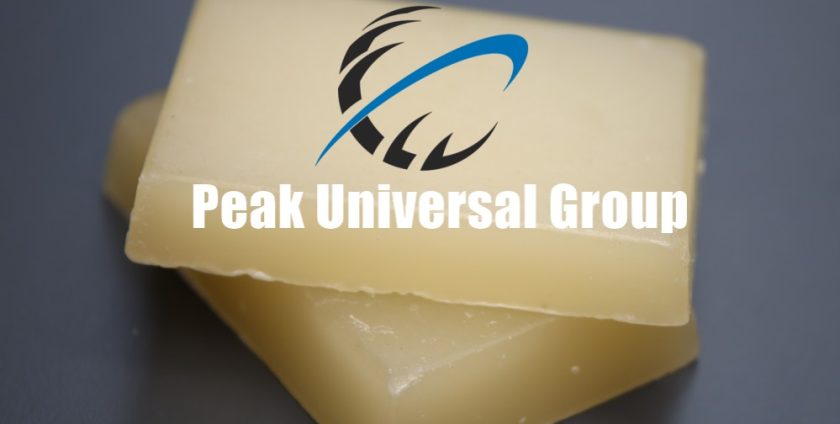
Slack Wax and Its Applications & Advantages in the Rubber & Tire Industry
Slack wax is a byproduct of the refining process of lubricating oil. It is a mixture of oil and wax, typically containing between 5% and 20% oil. This versatile material has numerous applications across various industries, one of the most prominent being the rubber industry.
In this comprehensive blog, we will explore the characteristics of slack wax, its various types, and its wide-ranging applications in the rubber industry. Additionally, we will delve into the advantages and disadvantages of using slack wax, the future prospects of this material, and the price factors involved. Lastly, we will highlight why Peak Universal Business is your ideal supplier for slack wax.
(Slack Wax Applications in Rubber Industry: Processing Aid, Anti-Tack Agent, Release Agent, Softening Agent, Lubricant, Filler Dispersant, Moisture Barrier)
What is Slack Wax?
Slack wax is a complex mixture of high molecular weight hydrocarbons, primarily paraffin and microcrystalline waxes, along with varying amounts of oil. It is produced during the refining of lubricating oils, particularly from the dewaxing process of base oils. The composition and properties of slack wax can vary significantly depending on the source and refining process.
Types of Slack Wax
Slack wax can be categorized based on its oil content and melting point:
- Light Slack Wax: Contains higher oil content (15-25%) and has a lower melting point (35-50°C).
- Heavy Slack Wax: Contains lower oil content (5-15%) and has a higher melting point (50-70°C).
Each type has distinct properties and applications, which we will explore in detail.
Applications of Slack Wax in the Rubber Industry
Slack Wax Applications in Rubber Industry– The rubber industry relies heavily on various additives and processing aids to enhance the properties and performance of rubber products. Slack wax plays a crucial role in several aspects of rubber manufacturing:
1. Processing Aid
Slack wax acts as an excellent processing aid in the rubber industry. It improves the flow and moldability of rubber compounds during the mixing and extrusion processes. The addition of slack wax reduces friction and shear forces, making it easier to process rubber materials and achieve uniform mixing of additives.
2. Anti-Tack Agent
In rubber manufacturing, tackiness can be a significant issue, especially during storage and handling of uncured rubber sheets or compounds. Slack wax is used as an anti-tack agent to prevent the rubber from sticking to itself or to processing equipment. This ensures smooth and efficient processing, reducing downtime and improving productivity.
3. Release Agent
Release Agent – During the vulcanization process, rubber compounds are cured at high temperatures in molds. Slack wax serves as an effective release agent, preventing the rubber from sticking to the mold surfaces. This facilitates easy removal of the cured rubber products, reduces mold cleaning time, and extends the life of the molds.
4. Softening Agent
Slack wax is used as a softening agent in rubber formulations to impart flexibility and enhance the pliability of the final product. It helps in achieving the desired hardness and elasticity in rubber compounds, making them suitable for various applications, such as tires, hoses, belts, and seals.
5. Lubricant
In addition to its role as a processing aid, slack wax functions as a lubricant in rubber manufacturing. It reduces the internal friction within the rubber compound, improving the overall processing efficiency and reducing energy consumption during mixing, extrusion, and molding operations.
6. Filler Dispersant
Filler Dispersant – Slack wax aids in the dispersion of fillers, such as carbon black, silica, and other reinforcing agents, within the rubber matrix. Proper dispersion of fillers is crucial for achieving the desired mechanical properties, strength, and durability of rubber products.
7. Moisture Barrier
Rubber products exposed to harsh environments or high humidity levels can benefit from the moisture barrier properties of slack wax. It helps in reducing the water absorption and permeability of rubber compounds, enhancing their resistance to moisture and extending their service life.
Advantages of Using Slack Wax in the Rubber Industry
1. Cost-Effectiveness
Slack wax is a cost-effective additive compared to other specialty waxes and processing aids. Its availability as a byproduct of the refining process makes it an economical choice for rubber manufacturers.
2. Versatility
The versatility of slack wax allows it to be used in various stages of rubber processing, from mixing and extrusion to molding and curing. Its multifunctional properties make it an invaluable additive in the rubber industry.
3. Improved Processing Efficiency
By reducing friction, tackiness, and mold adhesion, slack wax enhances the overall processing efficiency of rubber compounds. This leads to shorter production cycles, reduced energy consumption, and increased productivity.
4. Enhanced Product Quality
The use of slack wax as a softening agent, lubricant, and filler dispersant contributes to the uniformity and consistency of rubber products. It helps in achieving the desired mechanical properties, such as flexibility, strength, and durability.
5. Extended Mold Life
Slack wax acts as a release agent, preventing rubber compounds from sticking to molds. This reduces the need for frequent mold cleaning and maintenance, extending the life of the molds and minimizing downtime.
Disadvantages of Using Slack Wax in the Rubber Industry
1. Variability in Composition
The composition of slack wax can vary depending on the source and refining process. This variability can affect its performance and consistency in rubber formulations, requiring careful selection and testing by manufacturers.
2. Limited High-Temperature Stability
Slack wax may have limited stability at high temperatures, which can restrict its use in certain rubber applications that require elevated curing or operating temperatures.
3. Potential for Contaminants
As a byproduct of the refining process, slack wax may contain impurities or contaminants that can affect the performance and quality of rubber products. Ensuring the purity and consistency of slack wax is essential for optimal results.
Future Prospects of Slack Wax in the Rubber Industry
The future of slack wax in the rubber industry looks promising, driven by ongoing advancements in refining processes and the increasing demand for high-performance rubber products. Here are some key trends and developments:
1. Enhanced Refining Techniques
Advancements in refining techniques are expected to improve the purity and consistency of slack wax, reducing variability and enhancing its performance as an additive in rubber formulations.
2. Sustainable Solutions
The focus on sustainability and environmental responsibility is driving the development of eco-friendly slack wax alternatives. Renewable and bio-based waxes are being explored as potential substitutes for conventional slack wax in rubber applications.
3. Customized Formulations
Manufacturers are increasingly looking for customized slack wax formulations tailored to specific rubber processing requirements. This trend is expected to drive innovation and collaboration between slack wax suppliers and rubber manufacturers.
4. Growing Demand for High-Performance Rubber
The demand for high-performance rubber products, such as advanced tires, automotive components, and industrial seals, is expected to fuel the growth of slack wax usage in the rubber industry. The multifunctional properties of slack wax make it an ideal additive for enhancing the performance of these products.
Price Factors of Slack Wax
Several factors influence the price of slack wax:
1. Crude Oil Prices
The price of slack wax is closely linked to crude oil prices, as it is a byproduct of the refining process. Fluctuations in crude oil prices can impact the cost of slack wax.
2. Supply and Demand
The supply and demand dynamics of slack wax in the market can affect its price. Factors such as refinery output, production capacity, and market demand for rubber products play a role in determining slack wax prices.
3. Refining Process
The refining process used to produce slack wax can influence its cost. Advanced refining techniques that yield higher purity slack wax may come at a higher cost compared to conventional methods.
4. Transportation and Logistics
Transportation and logistics costs, including shipping and handling, can impact the final price of slack wax. Proximity to refineries and efficient supply chains can help in minimizing these costs.
5. Quality and Grade
The quality and grade of slack wax, including its oil content and melting point, can affect its price. Higher purity slack wax with lower oil content may command a premium price due to its superior performance characteristics.
Why Choose Peak Universal Business as Your Slack Wax Supplier?
Peak Universal Business is a leading supplier of high-quality slack wax, catering to the diverse needs of the rubber industry. Here are some compelling reasons to choose Peak Universal Business as your slack wax supplier:
1. Quality Assurance
Peak Universal Business is committed to providing premium quality slack wax with consistent composition and performance. Rigorous quality control measures ensure that you receive slack wax that meets your specific requirements.
2. Customized Solutions
Understanding the unique needs of the rubber industry, Peak Universal Business offers customized slack wax formulations tailored to your processing needs. Their technical expertise and collaborative approach ensure optimal results for your rubber applications.
3. Reliable Supply Chain
With a robust supply chain and efficient logistics network, Peak Universal Business ensures timely and reliable delivery of slack wax to your manufacturing facilities. Their strategic partnerships with refineries and transportation providers guarantee a stable supply of slack wax.
4. Competitive Pricing
Peak Universal Business offers competitive pricing for high-quality slack wax, providing cost-effective solutions for your rubber processing needs. Their transparent pricing structure and flexible terms make them a trusted partner for your business.
5. Technical Support
Peak Universal Business provides comprehensive technical support to help you optimize the use of slack wax in your rubber formulations. Their team of experts is available to assist you with product selection, formulation development, and troubleshooting.
Conclusion
In conclusion, slack wax plays a crucial role in enhancing the performance and efficiency of rubber manufacturing processes. Its multifunctional properties make it an invaluable additive in various stages of rubber processing, from mixing and extrusion to molding and curing. By choosing a reliable supplier like Peak Universal Business, you can ensure the consistent quality and performance of slack wax, driving the success of your rubber products in the competitive market.
Slack Wax Applications in Rubber Industry: Processing Aid, Anti-Tack Agent, Release Agent, Softening Agent, Lubricant, Filler Dispersant, Moisture Barrier
You can Read More about this product Here: Slack Wax
What is the Application of Slack Wax?
Slack Wax for Rubber & Tire Industry
How Heavy Slack Wax 5 to 8% Oil Content is Manufactured
Properties and Uses of Heavy Slack Wax 8-12%
If You have any other Query or Question you want to ask, Please don’t hesitate to Contact Us.
- 0 comment
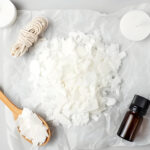
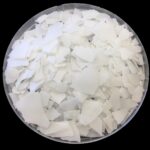
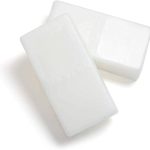
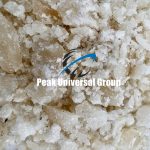
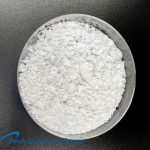
Leave a Reply